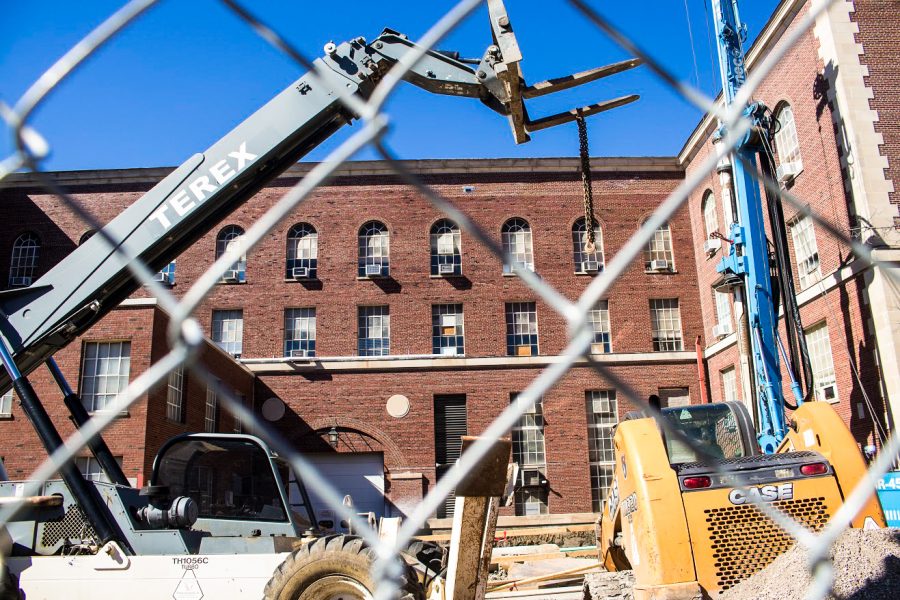New building expected to reduce carbon footprint
Talbot Laboratory is getting renovations to create more instructional space and include sustainable technology. The construction is expected to be completed by 2021.
Apr 22, 2019
A new building expected to open in spring 2021 will allow students to have access to state-of-the-art technology. It will also have sustainable features to help reduce the University’s carbon footprint.
The building is part of the College of Engineering’s Campus Instructional Facility Project. It will be located on the southeast corner of Springfield Avenue and Wright Street in Urbana.
The project’s sustainability components, such as a geothermal energy system, will regulate and conserve energy usage and temperature. It will also include smart glass technology with the ability to control incoming light. The Student Sustainability Committee donated $250,000 to the cause.
Bill Bell, executive director of marketing and communications for Engineering, said incorporating sustainability into the new construction is important.
“That’s really an exciting aspect to the project,” Bell said. “Sustainability has been important both from student interest and in terms of what the leadership wants to be sure that we are doing with our new facilities.”
Get The Daily Illini in your inbox!
Funding this building is expected to cost $75 million. The University is financing this new development through a public-private partnership, which allows the University to borrow bonds from an investor while being exempt from taxes.
The Illinois Finance Authority acts as an intermediary when it comes to helping nonprofit organizations find investors to fund their projects. After an investor is found, the Illinois Finance Authority will issue the bonds to the borrower. However, the borrower is responsible for paying back his or her debt to the investors.
Chris Meister, executive director of the Illinois Finance Authority, explained the Illinois Finance Authority’s purpose.
“The authority is established to deliver the service of issuing federally tax exempt … bonds in a predictable, professional, transparent manner,” Meister said.
Meister also said investors are not exclusively limited to big corporations.
“They can be insurance companies. They can be something called an SMA, or a separately managed account, that an entity … might have,” Meister said. “They can be retail buyers, which might be individual people who are buying individual bonds … so it’s a wide variety.”
The University has yet to decide what specific classes will be taught in the new facility.
“(It) will be an opportunity for departments across campus to take advantage of,” Bell said. “There’s going to be quite a lot of STEM … and engineering opportunities there, but by no means exclusively … it’s really a campus resource.”
Matthew Tomaszewski, associate provost for capital planning, said in an email the University aims to provide transformative teaching and learning experiences.
“This facility responds to this approach by providing spaces for interactive and immersive learning, that in turn (will) promote collaboration and teamwork among our students,” Tomaszewski said.
He said he is excited about the possibilities that will emerge from the new facility.
“This will be a facility that encourages innovative approaches in teaching, learning and collaboration to create a truly transformative experience for our students,” Tomaszewski said.






